
Posts Tagged: fruit trees
This BOG in the Heart of UC Davis Is a Treasure
"A bog is a wetland that accumulates peat, a deposit of dead plant material—often mosses, and in a majority of cases, sphagnum moss."--Wikipedia. Not so with the Biological Orchard and Gardens (BOG) on the University of California, Davis, campus. It's a 24,000-square foot treasure, a living...
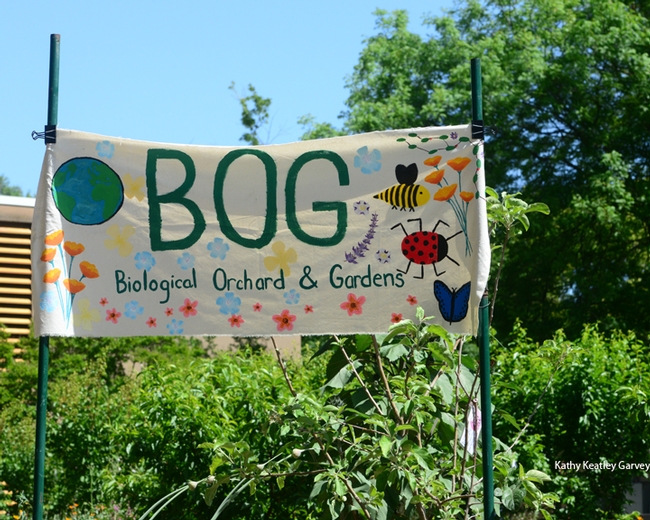
The Biological Orchard and Gardens (BOG) sign features floral and insect designs. It's located by the Mann Laboratory, UC Davis campus. (Photo by Kathy Keatley Garvey)
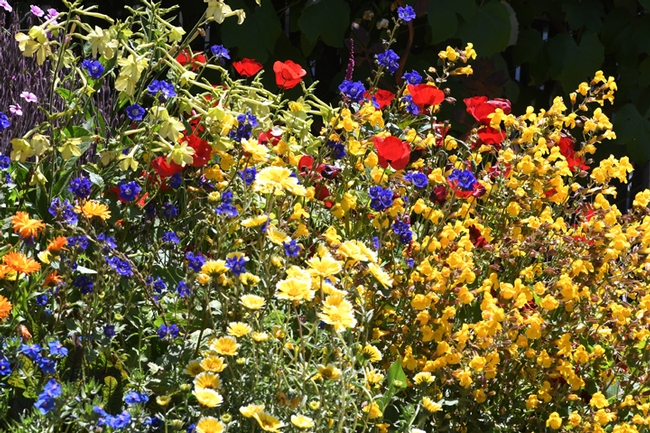
Colorful BOG garden in the early spring: among the flowers are tidy tips, desert bell, and European red flax. (Photo by Kathy Keatley Garvey)
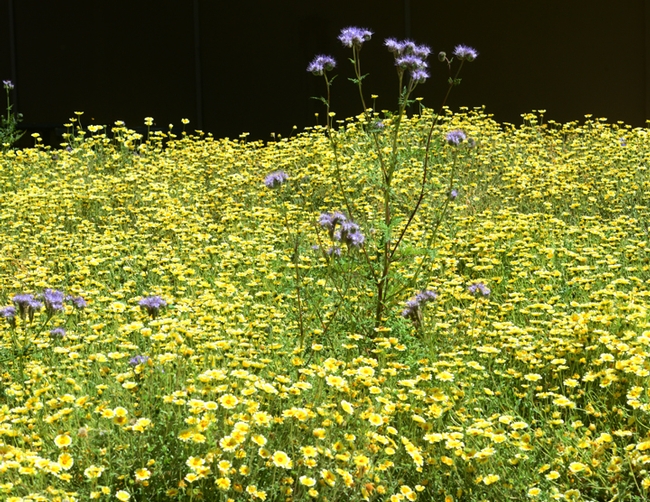
A mini-meadow of tidy tips, Layia platyglossa, with tall phacelia, Phacelia tanacetifolia. (Photo by Kathy Keatley Garvey)
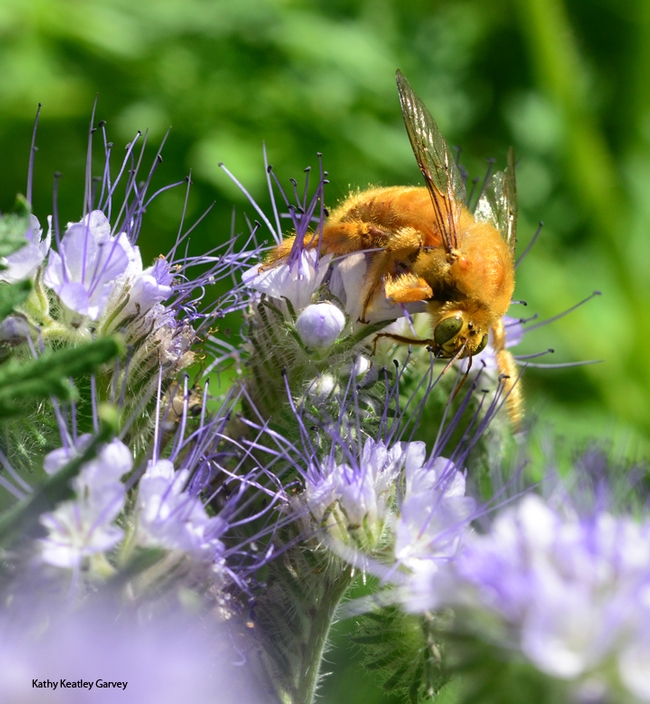
A male Valley carpenter bee, (Xylocopa varipuncta) forages on phacelia. (Photo by Kathy Keatley Garvey)
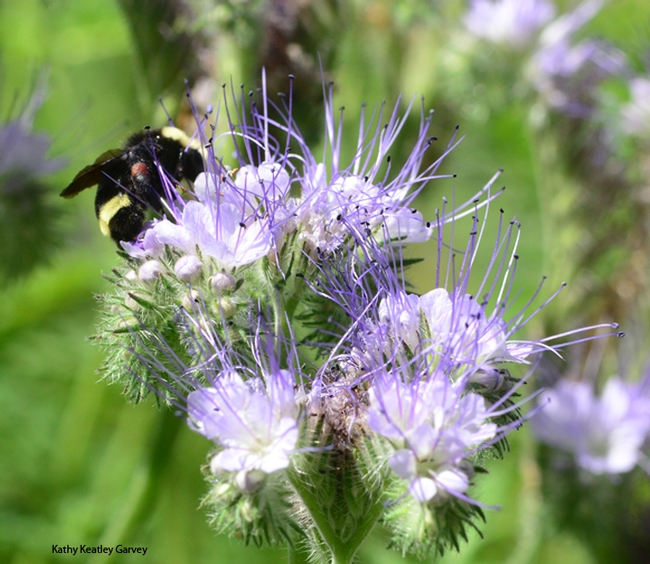
A yellow-faced bumble bee (Bombus vosnesenskii) sips nectar from phacelia. (Photo by Kathy Keatley Garvey)
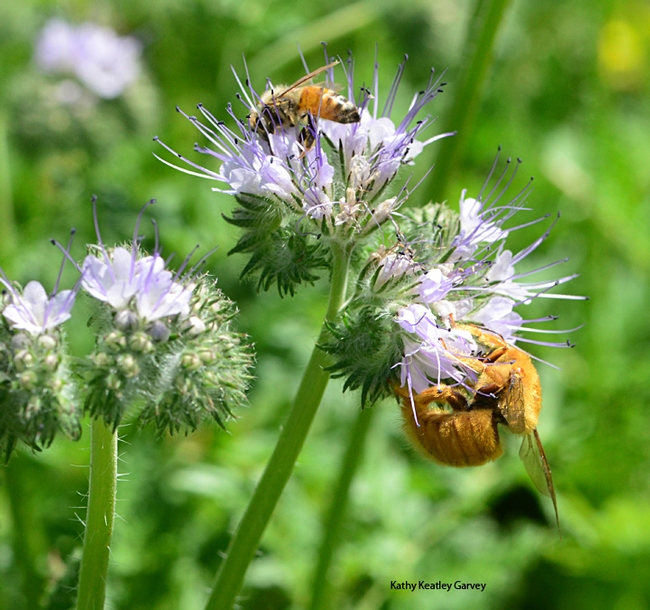
Size comparison! A honey bee is dwarfed by a male Valley carpenter bee, Xylocopa varipuncta. (Photo by Kathy Keatley Garvey)
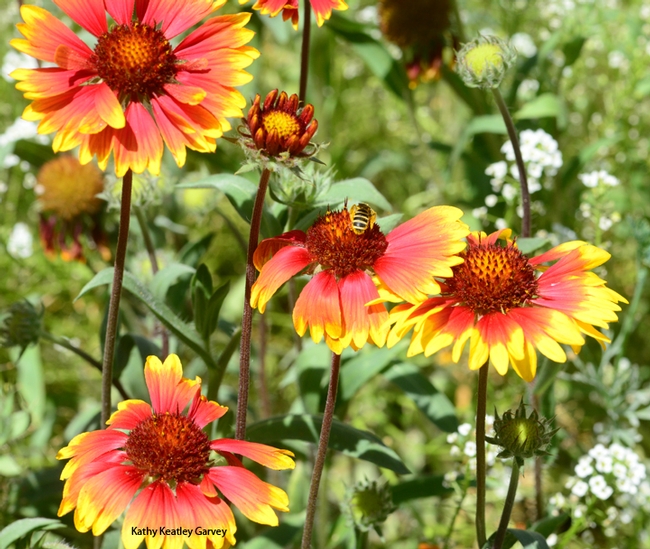
Many species of bees--as well as butterflies and other insects--are drawn to the blanketflower, Gaillardia. (Photo by Kathy Keatley Garvey)
Ornamental landscape date palm: An overlooked urban fruit tree

One fruit, though, is not on the radar of foodies and foragers. Yet it's crunchy, sweet, flavorful, often seedless, and very common in Southern California landscapes. It's the fruit of the date palm, rarely thought of as a food source in our urban environment, more frequently viewed as a nuisance because dates fall off trees, where they create litter that must be cleaned up.
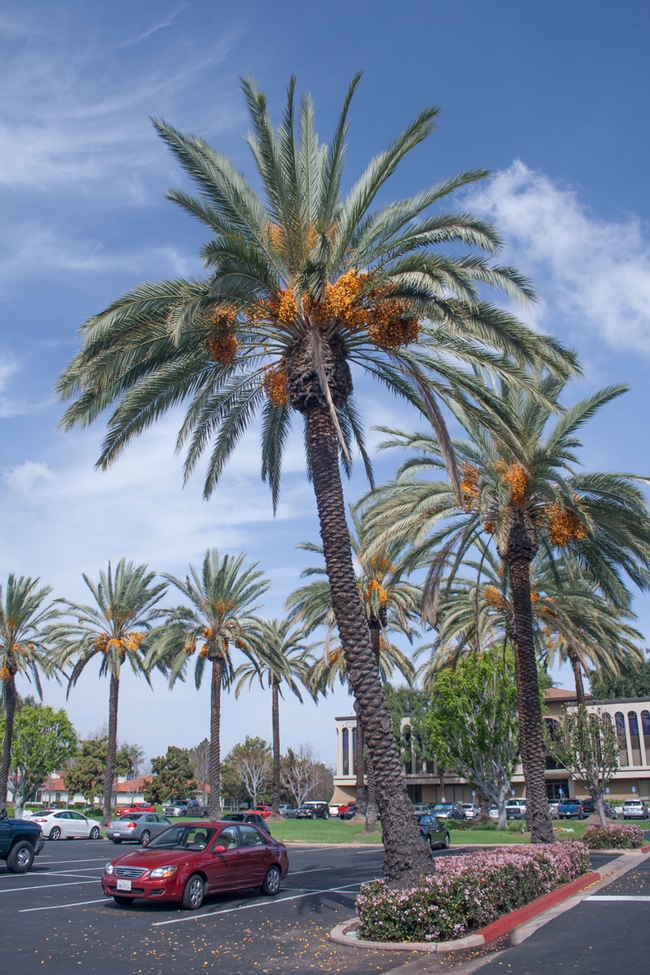
Unfortunately, coastal Southern California lacks the high sustained heat and aridity for proper fruit maturation and curing to produce traditional soft-ripe dates of good eating quality. The dates that fall from the trees have been unattractive to gather for sale and consumption, processes that could help to resolve the fruit litter problem in the landscape.
However, some varieties of dates can be eaten at a less than a mature state, traditionally called “khalal.” Fruit in the khalal stage have attained their maximum size, are typically yellow or red, have a sweet flavor, and are crunchy, somewhat like an apple. Several date varieties, like ‘Barhee,' are sometimes sold and eaten in the khalal stage. Fortunately, from a food standpoint (or unfortunately if you are a landscape manager), date fruits do mature to the khalal stage in coastal Southern California because high sustained heat and aridity are not required to attain this stage of development.
While ‘Barhee' is not too common as a landscape subject, another variety, ‘Zahidi,' is common and typically produces abundant fruits in coastal Southern California. These golden yellow fruits are conspicuous and showy in the khalal stage, are typically on the palm for several months from late fall to spring, and are really good to eat. Also, in many cases, these fruits are seedless! (Note to horticulture geeks: date palms are dioecious - separate male and female trees - and because nearly all edible date palms in the landscape are female, their flowers were pollinated by other species of landscape Phoenix. The resulting hybrid fruits are seedless, or pollination is not required for fruit to set and develop - parthenocarpy.)
Urban foragers looking for their next food adventure, or even a potential enterprise, might want to consider taking advantage of this otherwise nuisance and unwanted fruit. Khalal fruit can be gathered from the ground and cleaned. But it is best to collect them off the palm. Cutting an inflorescence (entire fruit stalk) and lowering it carefully to the ground would be ideal.

Khalal-stage fruits of the date variety ‘Zahidi’ are really good to eat: crunchy, sweet, and flavorful. Also, they are seedless (D. R. Hodel).
Increase your food security, plant a fruit tree now!
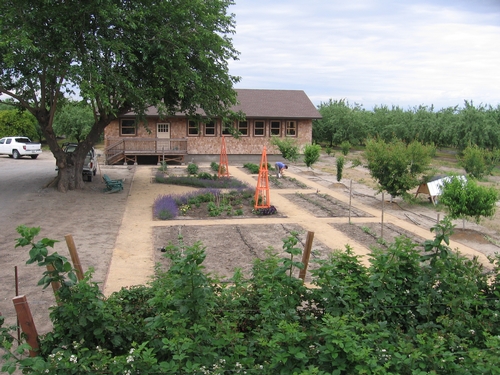
You can increase your own food security by planting food in your own garden . . . and you can start by planting a fruit tree now. February is the time that you can plant what are known as “bare-root” fruit trees, grapevines and berries. Fruit trees are now widely available at local nurseries or through mail order websites and catalogs.
Pick a tree fruit variety that you really love and something that you can’t purchase easily from the market. For me, this would be some of the more fragile freestone peaches such as Rio Oso Gem, or JH Hale. Or, you might pick a space saving self-pollenating variety of cherry such as Stella.
I always think great apricots are difficult to purchase in the markets so planting an apricot makes sense . . . they are relatively pest free, mostly self-fruitful and make beautiful landscape trees. My favorite apricot varieties include Patterson, Tilton and Harcot.
Just a note though, not all fruit varieties will grow in all climate zones. If you live in the San Joaquin or Sacramento valleys, then you are in luck because these are the primary stone fruit growing zones of California. If you live in the inland valleys of the coastal range, or in the foothill regions of the Sierras, you can grow most fruit varieties as well. If you are, however, on the coast or in Southern California, you may want to pick varieties that are "low chill." For information on the best varieties for your climate zone go UC's California Backyard Orchard website.
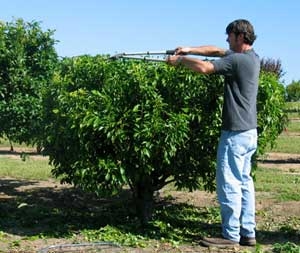
By keeping the fruit tree short, it is easier to harvest, deal with pest issues and cover with nets if you have a squirrel problem. For more information on how to prune a fruit bush or other fruit tree training systems, the UC Cooperative Extension Office in Sacramento County has an excellent horticulture note.
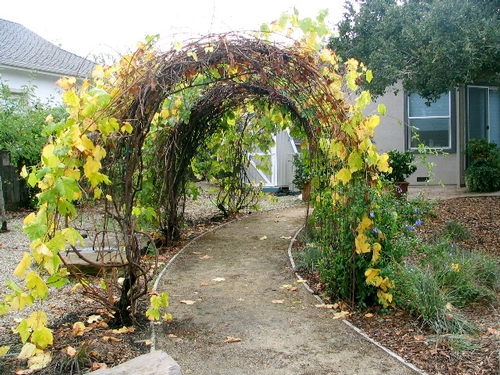
Apricots Best Pruned in Late Summer to Prevent Dieback

The bark may appear dark with an amber colored gumming on the branches.

To combate that the disease and reduce the potential for Eutypa to infect trees, you should begin pruning your apricot and cherry trees during the later part of summer and early fall at least 4-6 weeks prior to rainfall. However, realize that you may be opening your trees to sunburn with summer pruning so be sure to paint exposed branches with a diluted white latex housepaint with 50:50 water to paint mix. Also avoid pruning if you are going to have an extended period of 100 degree plus weather.
To Learn more.....
